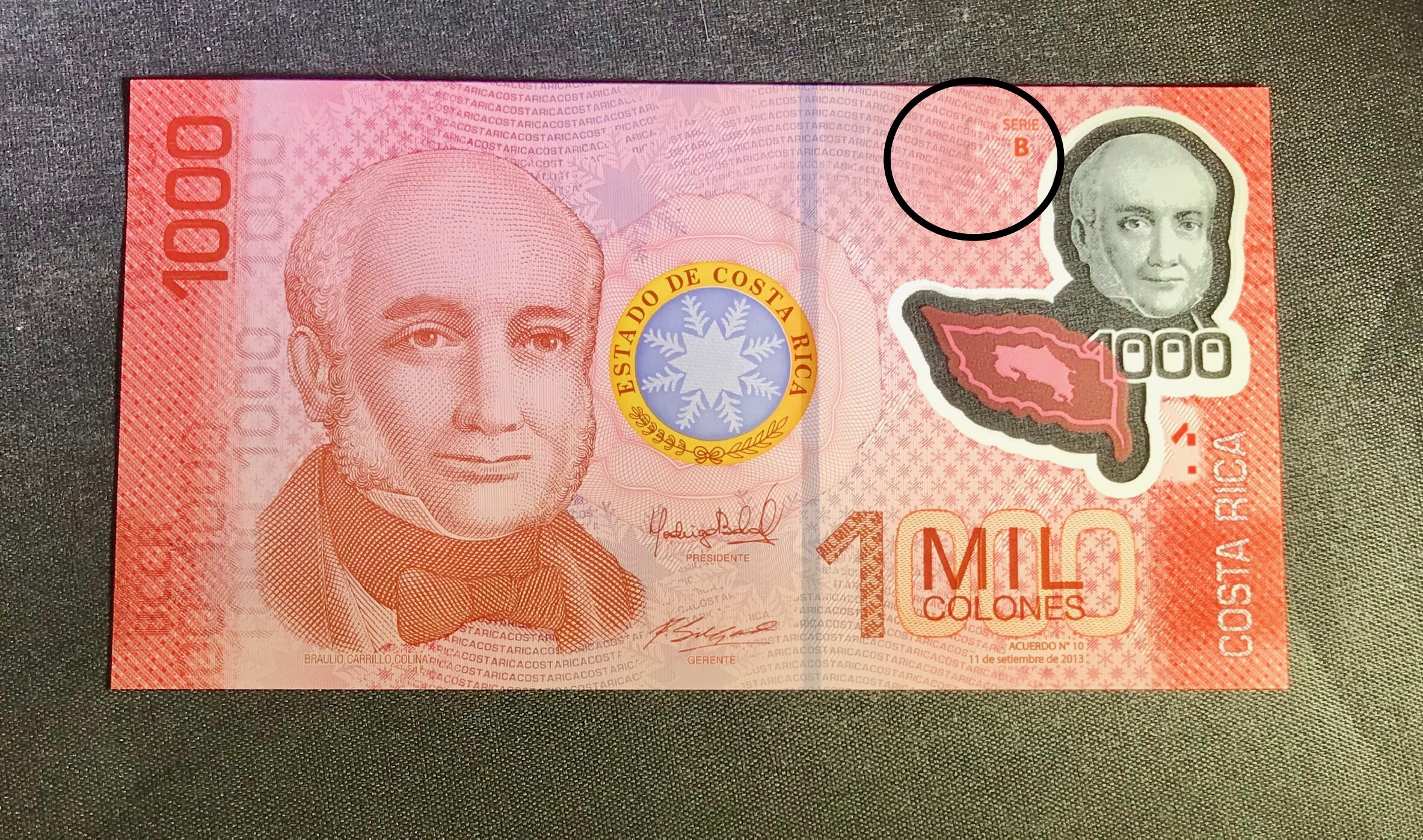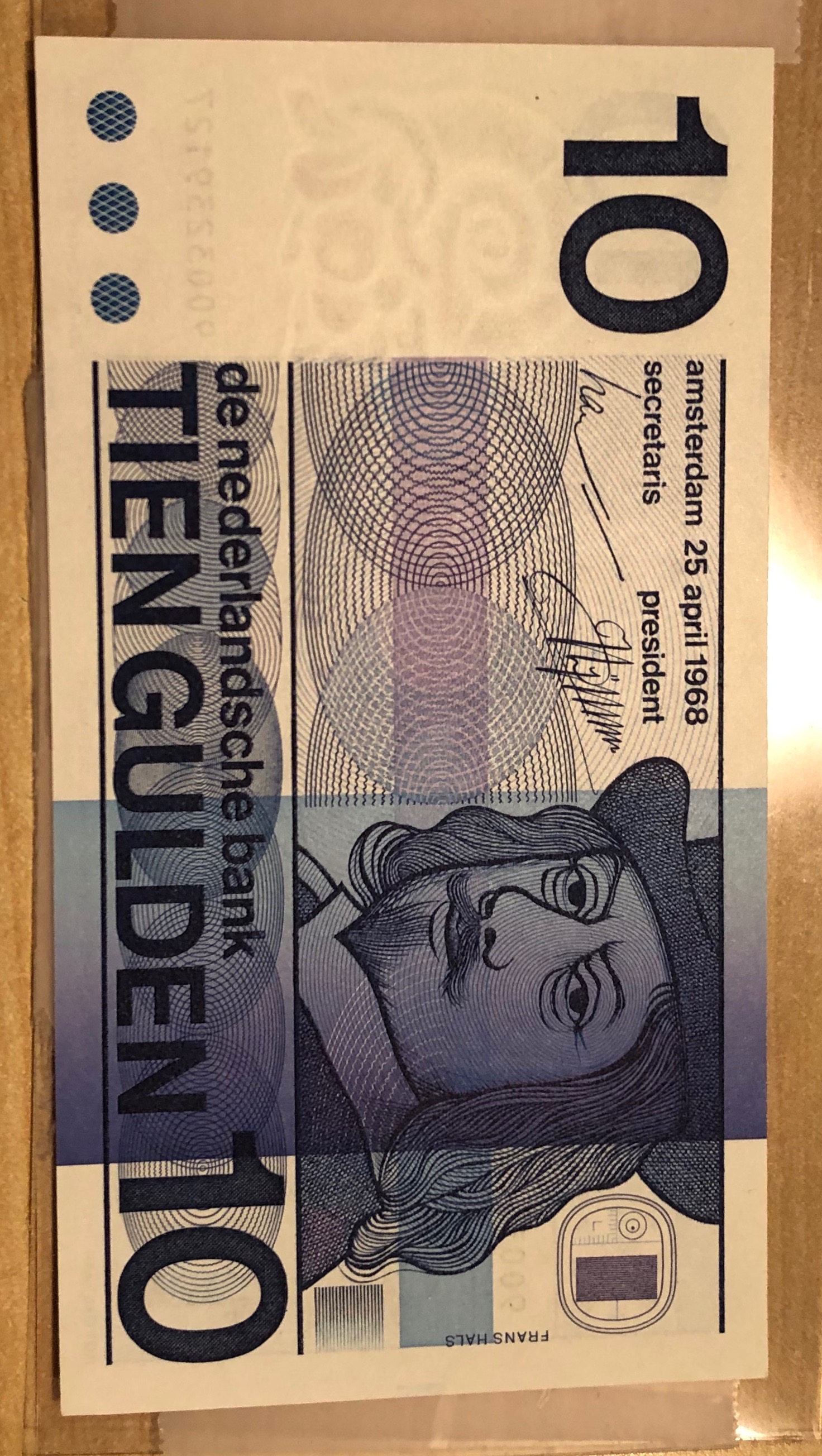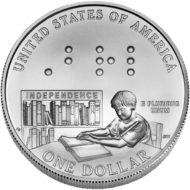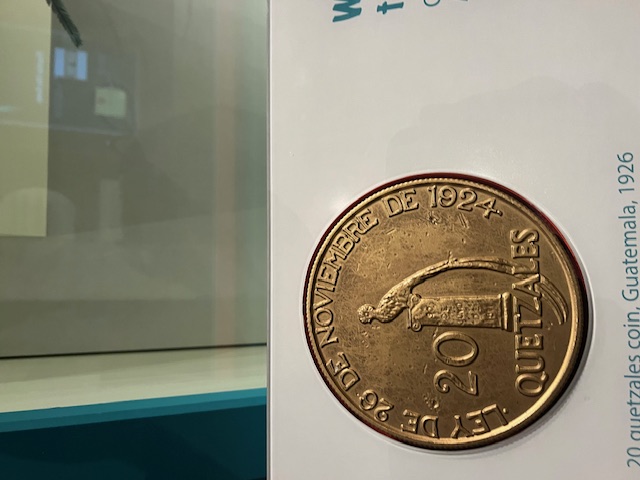Originally the title of this post was going to be why I am not collecting paper currency. But over the months as I was putting my thoughts together (AKA procrastinating) to write this post, I had to admit that I do have a bank note collection, and for that matter, I do collect accessible currency after all, but more about that at the end. In this post, I will write about the challenges of collecting paper currency and about what I do instead, for the most part.
Harder to identify
Paper currency in general is harder to tell apart. After having collected coins for almost 40 years, I am able to recognize at least 500 different coins by touch. There are so many ways to tell coins apart: shape, edge, weight, easy-to-feel numbers and figures, etc. Paper currency has a more limited set of features to distinguish. This is changing though with the new polymer notes which are more tactile, and currency features are possible to tell apart. However, shapes are still much harder to identify. An example would be the 1000 Colones from Costa Rica, which has a small tactile mark, much of the surface is smooth, and the number 1000 is easy to find and feel. A similar looking paper note would be much harder to tell apart.

There is of course a method to identify bank notes with Seeing AI’s optical character recognition system. This would only work if the note is in a good condition and uses a character set which my OCR can recognize. This method would not be useful on lower quality notes or where the font is more complex. At this point what remains is asking someone to help me with identification, which I already do way too much.
Less difference between notes than between coins
But let’s say I come up with a system to organize my bank notes. The problem still remains that it doesn’t give me as much enjoyment as coins do, because the notes are relatively identical just by touch. Of course, there are some interesting ones, notes which are extremely small or big, or notes which are unique in some way for example their material or when I can feel some of the design on polymer notes. This still doesn’t justify collecting bank notes for me, especially given their prices, getting a nice note, can be much more expensive than getting a coin I enjoy. The expense mostly comes from the quality of the note, because while a circulating quality coin can be interesting, in case of notes it makes more sense to get an uncirculated one.
Wears out faster than coins
Bank notes also wear out much faster than coins. While I can pick up a circulation coin as many times as I want to without compromising the quality. Examining a note by touch a few times definitely adds some wear to it, no matter how carefully I touch it. For that matter, as design is harder to feel on bank notes, it is almost impossible to touch it very gently and still enjoy it. After a few times the notes start losing their features, taking them out of the holder may slightly damage the corners, and they can easily be bent. Not to mention the fingerprints, which don’t matter at all on a worn note, but I feel bad damaging a more expensive uncirculated note.
Less tactile pleasure
For me to enjoy a collection only makes sense by touch, and not just to feel it to get a sense of what it is like, but holding an artifact in my hand, explore it, and marvel about the history and culture behind it. The more I read about a note or coin, the more it makes sense to pull it out again to touch it. For that matter, I like to have a few interesting coins out on my desk, especially the new ones I get, often they stay out for a few days while I am reading about them, before I put them away. This is definitely not possible to do with a bank note on a cluttered desk.
Bank notes are interesting
But being a coin collector is not at all about hoarding and owning coins. For that matter, it is the least I do with them. Once I have a coin I learn about it, I explore the culture, history and economy behind it. Thus, understanding a country’s currency is impossible without understanding their banknotes. Therefore, I am very interested in banknotes in general, to me they are just as interesting as coins. It is because of the practical reasons above that I decided not to actively pursue paper currency.
Reading is better than owning
What’s left is the internet and books to satisfy my curiosity about bank notes. I usually learn about notes together with coins. I even joined the International Bank Note Society, I really enjoy their publications and the discussions, not to mention that it is probably one of the best places to ask if I have any questions.
What I collect
I started to research accessible currency, which means bank notes with features that allow people with disabilities to recognize them. I am particularly interested in tactile features for the blind. This is one thing that is simply not possible to learn from the internet or catalogs. I can read about the accessibility features, but in reality it is even more important to understand how useful those tactile marks are. The only way to know that is to touch it. Thus, I do collect notes with tactile marks, mostly the lower value ones. Normally a country uses the same tactile features on all of their notes, so once I have one or two different denominations, I have an understanding of the features a country has implemented. For my research, it is absolutely necessary to explore these notes in greater detail, so I have to accept that the notes I have will over time wear a bit, and lose some of their collector value. Probably the only one I am extremely careful with is the Dutch 10 Guilder, which was the first one with tactile marks for blind people, and I happen to have an uncirculated version of it. It is a treat when I pull it out.

I also collect currency from my foreign trips. This is almost a no brainer, after all it is harder to exchange or sell it after a trip than what it is worth. So, when I leave a country I try to keep the nicer bank notes and spend the worn ones.
Another collection I have is a few hundred notes I collected when I was a kid. These are probably worth about the paper they are printed on, but they have more of a sentimental value. When I started to collect coins, I collected everything, and bank notes only made sense at the time. Unfortunately, I didn’t know how to do it, so most of them are wrinkled and folded. I kept a few of them in a nicer condition, those are mostly the Hungarian Pengos I got from my grandfather, but those are by default not good quality ones. Those notes are from the Hungarian post war era, when due to the inflation, people were carrying them around in bags and boxes and their value often didn’t last longer than a few days.

